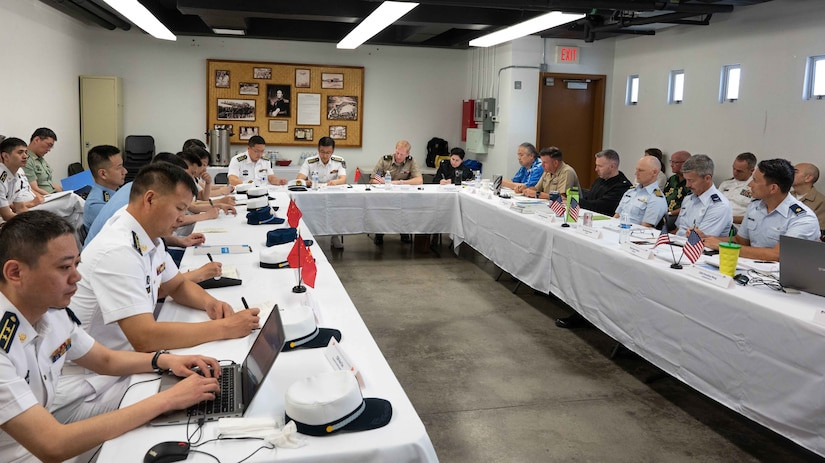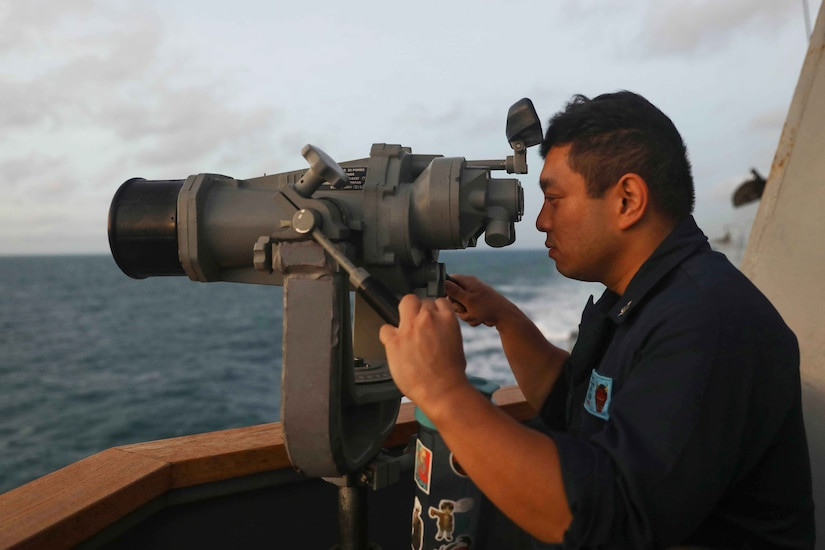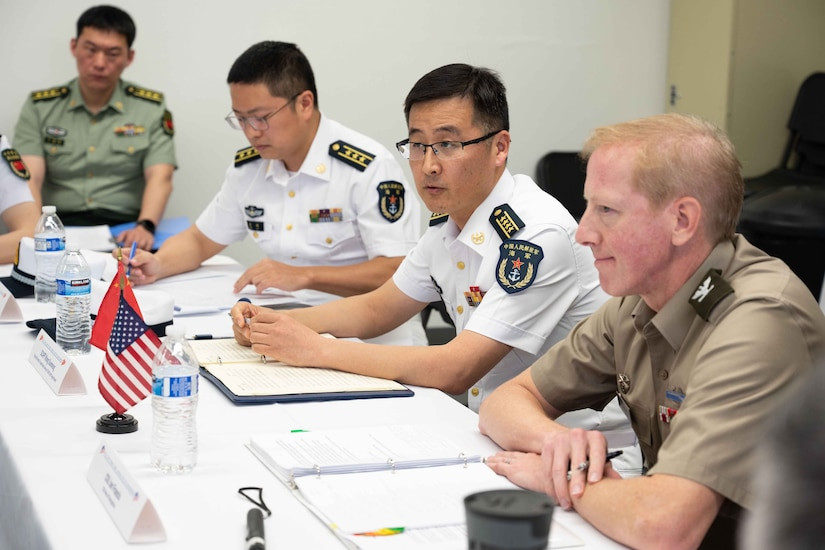Recent dialogues between U.S. and Chinese military officials highlight the critical need for clear communication and mutual understanding in maintaining safe and professional interactions. While discussions focus on operational protocols and risk reduction, the very uniforms worn by military personnel represent national identity, professionalism, and the standards each military upholds. Examining Chinese Military Uniforms offers a deeper perspective into the People’s Liberation Army (PLA) and the context of these crucial military engagements.
The uniforms of the Chinese military, officially known as the People’s Liberation Army (PLA), are more than just clothing; they are symbols of national pride, military discipline, and evolving military capabilities. Just as U.S. military uniforms project American values and military professionalism, Chinese military uniforms reflect the PLA’s modernization and its role on the global stage.
 Members of the U.S. and Chinese military meet around a large table.
Members of the U.S. and Chinese military meet around a large table.
Image: High-level meeting between U.S. and Chinese military representatives, underscoring the importance of dialogue and understanding in military relations.
The PLA has undergone significant uniform reforms over the decades, mirroring the country’s broader development and military modernization. Early PLA uniforms were simple and functional, emphasizing practicality over elaborate design. However, as China’s economic and military power has grown, so too has the sophistication and variety of its military uniforms.
Modern Chinese military uniforms are designed to be distinct and recognizable, reflecting the PLA’s different branches – Army, Navy, Air Force, and Rocket Force. Each branch has its own set of uniforms for different occasions, ranging from daily wear and training to formal dress and combat situations. The colors, insignia, and styles are carefully chosen to represent the specific branch and rank of the personnel.
 A service member in uniform looks through binoculars aboard a Navy vessel.
A service member in uniform looks through binoculars aboard a Navy vessel.
Image: A U.S. Navy officer on watch, highlighting the professionalism and readiness expected of military personnel, a standard mirrored in the appearance and bearing of Chinese military officers.
The professionalism displayed in military interactions, such as the Military Maritime Consultative Agreement (MMCA) talks, is partly reflected in the appearance of the personnel involved. Uniforms play a role in establishing a sense of order, discipline, and mutual respect, even amidst complex geopolitical dynamics. When U.S. and Chinese military personnel meet, their uniforms immediately identify them as representatives of their respective nations and militaries.
Recent reports indicate a focus on reducing unsafe military interactions. In this context, understanding aspects of each other’s military culture, even something as seemingly simple as uniforms, can contribute to building a more nuanced understanding. While uniforms are not the primary focus of military dialogues, they are a visual representation of the forces involved and the professionalism both sides strive to maintain.
Image: Representatives from the U.S. and Chinese militaries at the MMCA talks, flags displayed to symbolize national representation and the formal nature of the discussions.
In conclusion, while the core discussions between U.S. and Chinese military officials revolve around operational safety and communication protocols, considering the symbolism inherent in military uniforms provides a broader perspective. Chinese military uniforms, like those of any nation, represent identity, professionalism, and evolving military capabilities. As the U.S. and China continue to engage in dialogue to manage military interactions, recognizing these symbolic aspects can contribute to fostering mutual respect and understanding, ultimately supporting safer and more professional engagements.

 Service members in U.S. and foreign military uniforms sit at table displaying U.S. and Chinese flags.
Service members in U.S. and foreign military uniforms sit at table displaying U.S. and Chinese flags.